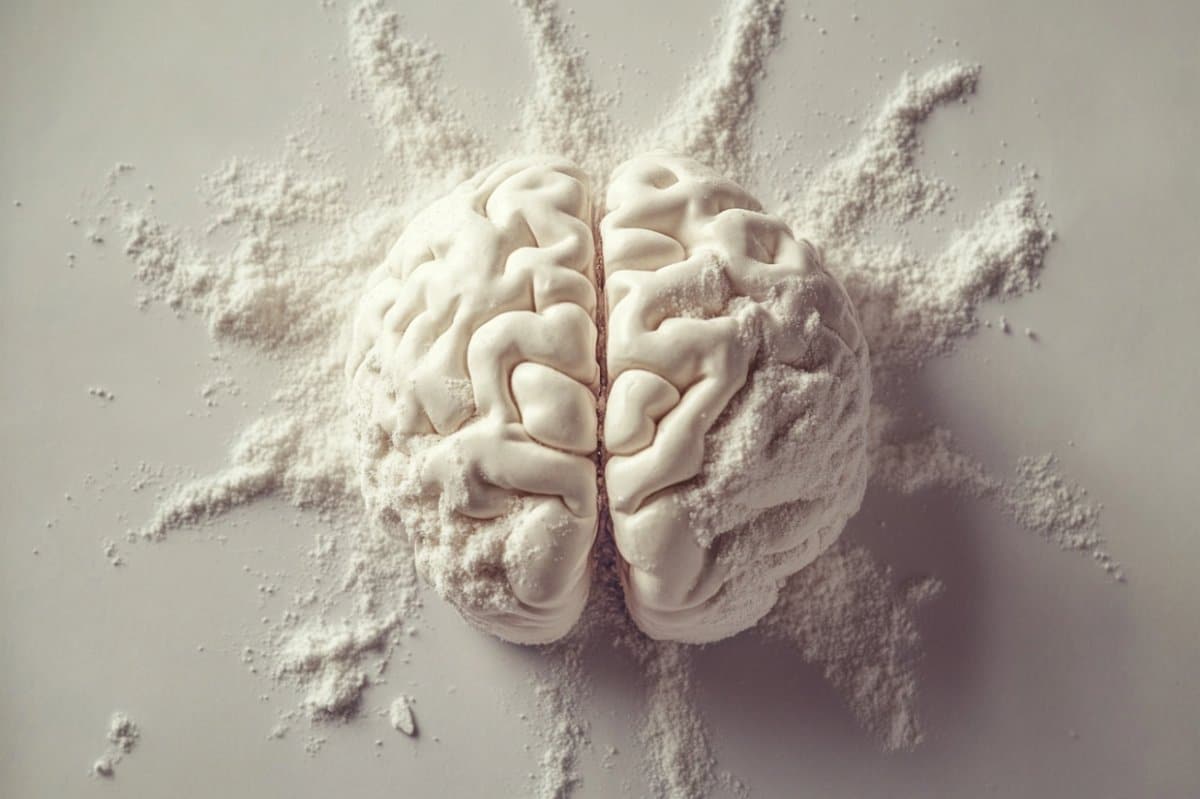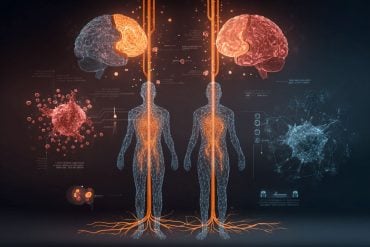Summary: In a groundbreaking study, researchers have engineered fruit flies that voluntarily consume cocaine, creating the first fly model for cocaine addiction. Typically, flies avoid the drug due to its bitter taste, but by disabling their bitter-sensing receptors, scientists encouraged addictive behavior within just 16 hours of exposure.
This model is a major step toward rapidly testing the genetic and neurological mechanisms behind cocaine use disorder. Because flies share many addiction-related genes with humans, this research could greatly accelerate the discovery of effective treatments.
Key Facts:
- Fly Addiction Model: Genetically altered fruit flies will now self-administer cocaine, mimicking addictive behavior.
- Taste Receptor Blockade: Disabling bitter taste receptors enabled flies to prefer cocaine-laced sugar water.
- Therapeutic Acceleration: This model allows fast screening of addiction-related genes to inform treatment targets.
Source: University of Utah
For the first time, researchers have created genetically modified fruit flies that can become addicted to cocaine. The flies will self-administer cocaine if given the option.
The new model could prove immensely valuable for the development of new therapies to prevent and treat cocaine use disorder, a growing and deadly concern that affects about 1.5 million people nationwide.

Heredity strongly impacts the risk of developing cocaine use disorder, but the large number of genes implicated in addiction risk has made it difficult to determine which might be the best targets for therapeutics.
With their new fruit fly model of cocaine use disorder, the researchers hope to reveal the biology of addiction and find better therapies much faster than was previously possible.
The new results are published in Journal of Neuroscience.
High-flying aspirations
Flies and humans react to cocaine in remarkably similar ways, says Adrian Rothenfluh, PhD, associate professor of psychiatry at the University of Utah and the senior author on the study. “At low doses, they start running around, just like people,” Rothenfluh says.
“At very high doses, they get incapacitated, which is also true in people.”
Flies and humans have a lot in common when it comes to addiction. Flies have about 75% of the human genes that are known to be involved in disease, and the insects have been instrumental in discovering the underlying biology behind other substance dependencies.
Because fruit flies grow quickly and are easy to conduct genetic experiments with, a fruit fly model of cocaine use disorder would be a valuable early step toward developing therapies.
There is just one problem—one very significant difference between flies and humans—Rothenfluh says: “Flies do not like cocaine one bit.”
His research team found that when given a choice between sugar water and sugar water laced with cocaine, fruit flies consistently chose the drug-free option, even when they’d been exposed to cocaine previously.
To better understand addiction in humans, the scientists needed to figure out why flies wouldn’t take cocaine—and if there was a way to bypass that barrier.
The bitter truth
Travis Philyaw, PhD, first author on the paper, suspected that the answer might lie in the flies’ sense of taste.
“Insects are evolutionarily primed to avoid plant toxins, and cocaine is a plant toxin,” says Philyaw, now a research scientist at University of Washington, who did the research as a graduate student in Rothenfluh’s lab.
“They have taste receptors on their ‘arms’—their tarsal segments—so they can put their hand in something before it goes in their mouth, and decide, ‘I’m not going to touch that.’”
By watching how flies’ sensory nerves responded to cocaine, the researchers found that the compound strongly activates bitter-sensing taste receptors in the flies’ tarsal segments.
When the researchers muted the activity of those bitter-sensing nerves so that the flies couldn’t taste bitter flavors, they did start developing a preference for cocaine-laced sugar water over plain sugar water.
The dosage was important—flies would only voluntarily consume cocaine at low concentrations—but they developed a preference remarkably quickly, within 16 hours of first exposure.
From insects to impacts
The researchers say this will help them understand addiction in humans. Now that scientists can study the process in fruit flies, the pipeline to new discoveries can be greatly accelerated, studying hundreds of potentially relevant genes in a much shorter time span.
“We can scale research so quickly in flies,” Philyaw says.
“We can identify risk genes that might be difficult to uncover in more complex organisms, and then we pass that information to researchers who work with mammalian models. Then, they’re able to uncover treatment targets that facilitate the jump from studying animal behavior to developing human therapeutics.”
Rothenfluh agrees: “We can really start to understand the mechanisms of cocaine choice, and the more you understand about the mechanism, the more you have a chance to find a therapeutic that might act on that mechanism.”
In addition to specific searches for therapeutics, Rothenfluh says basic research into the mechanisms of how the human mind—and the fruit fly mind—work can have unexpected impacts.
“Just trying to understand the simple little fly brain can give us insights that you cannot anticipate,” he emphasizes.
“Basic science is important, and you never know what exciting things you might find that turn out to be impactful for understanding the human condition.”
This research is published in Journal of Neuroscience as “Bitter sensing protects Drosophila from developing experience-dependent cocaine consumption preference.”
Funding: The work was funded by the Huntsman Mental Health Institute, the University of Utah Molecular Medicine Program, and the National Institutes of Health, including the National Institute of Diabetes and Digestive and Kidney Diseases (grant number R01DK110358), the National Institute on Drug Abuse (grants K01DA058919, R21DA049635, and R21DA040439), and the National Institute on Alcohol Abuse and Alcoholism (grants R01AA026818, R01AA019536-S1, and R01AA030881). Content is solely the responsibility of the authors and does not necessarily represent the official views of the National Institutes of Health.
About this genetics and addiction research news
Author: Sophia Friesen
Source: University of Utah
Contact: Sophia Friesen – University of Utah
Image: The image is credited to Neuroscience News
Original Research: Closed access.
“Bitter sensing protects Drosophila from developing experience-dependent cocaine consumption preference” by Adrian Rothenfluh et al. Journal of Neuroscience
Abstract
Bitter sensing protects Drosophila from developing experience-dependent cocaine consumption preference
Cocaine is an addictive psychostimulant, and the risk of developing cocaine use disorder (CUD) is highly heritable. Little is known about the specific genes and mechanisms that lead to the development of CUD, and there are currently no FDA-approved pharmacotherapies that can treat it.
Drosophila has proven an effective model organism to identify genes and mechanisms underlying addiction, especially alcohol use disorder.
While flies exposed to cocaine display features of acute intoxication like those observed in mammals, including hyperactivity and reduced sleep, to date, there is no model of preferential cocaine self-administration in flies.
Here, we assayed cocaine consumption in Drosophila males, as well as preference in a two-choice paradigm.
We also investigated mechanisms involved in cocaine taste sensing using genetic and imaging tools. We show that cocaine is innately aversive to flies and that this avoidance depends on bitter sensing.
Gustatory sensory neurons expressing the Gr66a bitter receptor are activated upon exposure to cocaine.
Silencing of these bitter-sensing neurons or mutation of Gr66a reduces cocaine avoidance. In a longitudinal choice assay, these flies develop preference for cocaine-containing solutions within 12-18 h, whereas control flies do not.
Our findings show that bitter sensation protects flies from developing cocaine self-administration preference.
Conversely, silencing bitter perception enables us to use Drosophila as a model for experience-dependent cocaine self-administration preference.
This opens the door to testing human variants associated with CUD for their causative role in cocaine self-administration in this highly tractable model organism.







